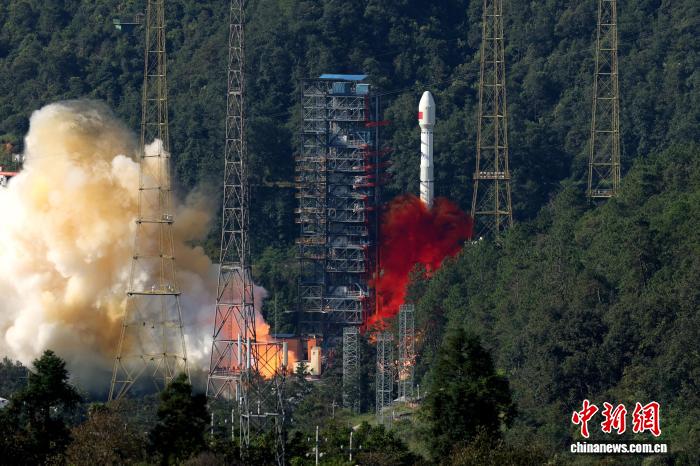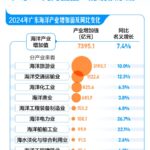Measuring China’s Progress Over Five Years: Achieving “Chinese Precision” Through Millimeter-Level Accuracy
Great achievements begin with the smallest details. Since the 14th Five-Year Plan period, China’s high-end manufacturing has progressively reached new heights, thanks to the millimeter-level precision of “Chinese Precision.”
A metal rod with a diameter of 30 millimeters underwent 21 consecutive hours of milling operations on a high-precision CNC machine, ultimately producing 127 needle-shaped test pieces with a diameter of 0.05 millimeters, as fine as a human hair. This achievement came from an advanced CNC machine developed by an enterprise in Shandong, epitomizing “Chinese Precision.”
Manufacturing precision reflects a country’s industrial craftsmanship. This is evident not only in the ability to create micro-scale dimensions and intricate structures but also in measurement accuracy and sensitivity. “Precision” serves as the “ruler” for industrial development, particularly in high-end manufacturing, where certain critical processes demand extremely high measurement accuracy—even a slight deviation can affect the final outcome.
As China’s large-scale equipment manufacturing industry expands, precision measurement technology is evolving toward large-scale and spatial measurements. This year, China established a large-length reference device with a measurement range of 80 meters and an error margin of just 2.45 micrometers within that range. This is equivalent to discerning the diameter of a hair from 1,600 meters away, achieving internationally leading standards.
This large-length reference device fills a gap in the highest metrological capabilities for large-scale manufacturing, significantly enhancing the precision and quality reliability of key components in large equipment such as spacecraft docking, aircraft wing-body assembly, and ship hull assembly. It holds great importance for advancing high-quality development in manufacturing.
Breakthroughs have also been made in China’s quantum precision measurement field. A newly developed atomic spin sensor successfully achieved ultra-high sensitivity and traceable accurate measurements of weak magnetic fields. In near-Earth magnetic environments, it can precisely measure magnetic signals a billion times weaker than Earth’s magnetic field, perfectly accomplishing “precise measurement” and “accurate measurement.”
From large-scale equipment on land to capturing magnetic signals in the vast universe, “Chinese Precision” has continuously improved during the 14th Five-Year Plan period. These achievements not only fill gaps and enhance China’s measurement technology system but also provide technical support for basic scientific research, high-end equipment manufacturing, and space exploration.
Precision often determines the height of development. An academician once pointed out that the accuracy and reliability of time and spatial positioning are focal points in contemporary strategic competition among powerful nations.
“Time error is closely related to distance measurement. If satellite navigation time error reaches one second, it translates to a distance discrepancy of 300,000 kilometers,” explained an electronic field expert from the National Satellite Navigation and Positioning Service Product Quality Inspection and Testing Center.
In modern transportation, time and spatial precision are particularly crucial. Take the BeiDou Navigation Satellite System as an example. Previously, weak satellite signals in the Yanchong Expressway tunnels made it impossible for vehicles to obtain positioning data or transmit information, posing a global challenge. With the advanced technology of the BeiDou system, vehicles in tunnels can now be accurately positioned, and navigation systems can even mark rescue points and escape routes within tunnels.
This is just the “tip of the iceberg” in BeiDou system applications. During the 14th Five-Year Plan period, China has already met targets for BeiDou system adoption in key transportation sectors ahead of schedule.
Meanwhile, China has established a nationwide BeiDou ground-based augmentation system “network,” capable of providing real-time meter-level, decimeter-level, centimeter-level, and post-processing millimeter-level high-precision positioning services to industry and public users. This “network” has expanded from traditional surveying and mapping to applications in precision agriculture, deformation monitoring, autonomous driving, power inspection, smart ports, and shared bicycles.
As the 14th Five-Year Plan period concludes, “Chinese Precision” remains one of China’s key objectives for future development.
Recent initiatives aim to address critical measurement issues in industrial development, while future plans indicate that the next-generation BeiDou system will enhance the maintenance accuracy of spatiotemporal benchmarks and autonomous operation capabilities, continuously improving service performance.
Looking ahead, “Chinese Precision” is expected to further advance, injecting new vitality into industrial development. Through microscopic advancements at the millimeter level, China’s economic progress will steer toward higher standards.




